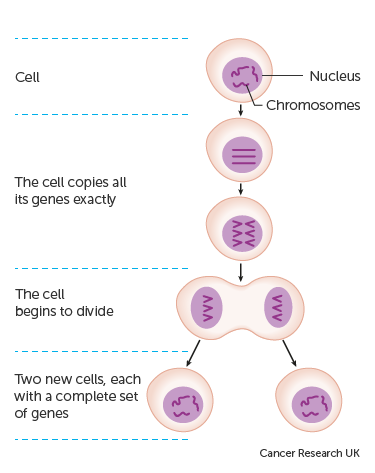Chemotherapy in Cambodia
Find the best clinics for Chemotherapy in Cambodia
No clinics available
Morocco offers the best prices Worldwide
Price: $ 114

WHY US?
At Medijump, we're making medical easy. You can search, compare, discuss, and book your medical all in one place. We open the door to the best medical providers worldwide, saving you time and energy along the way, and it's all for FREE, no hidden fees, and no price markups guaranteed. So what are you waiting for?

Free

Best Price

Widest Selection

Risk-Free
What you need to know about Chemotherapy in Cambodia

Chemotherapy is a type of treatment where medicine with powerful chemicals is used to destroy fast-growing cells in the body. It is usually used to treat cancer because cancer cells can grow and multiply faster than most other cells within the body. While it is not a singularly defined service, it generally involves a series of treatments administered in cycles over a period of weeks or months, with rest periods in between.
Chemotherapy may be used in a variety of settings for people with cancer, including:
-
As the primary treatment for cancer (alone without other types of treatments).
-
In combination with other therapies, such as radiation, surgery, or hormone therapy.
-
After other types of cancer treatments, such as surgery, to kill hidden cancer cells that may remain in the body. This is called adjuvant therapy.
-
To prepare your body for other treatments, such as surgery and radiation, by shrinking a tumor. This is called neoadjuvant therapy.
-
To help relieve symptoms of cancer by destroying some of the cancer cells. This is called palliative chemotherapy.
Besides treating cancer, some chemotherapy drugs can be used to treat other conditions, such as immune system disorders and bone marrow diseases.
What is the cost of Chemotherapy in Cambodia?
The expense of Chemotherapy in Cambodia can fluctuate significantly due to various elements. These elements include the cancer type and its stage, the particular chemotherapy medications employed, the schedule and length of procedures, as well as the fees charged by the healthcare provider. Extra expenses arising from the procedure - like diagnostic examinations, hospitalizations, and post-procedure care - must also be taken into account.
Although determining an accurate expense without a detailed treatment plan might be tough, it's essential to engage in a financial discussion with your healthcare professional or a finance expert at the clinic. They are equipped to provide a tentative cost summary, discuss various payment alternatives, and explore possible avenues for financial aid.
What does the Procedure Involve?
Chemotherapy drugs can be given in several different ways. The specific drugs used, their combinations, and the method of administration can vary greatly depending on the type of cancer, its stage, the patient's overall health, and the intended goal of treatment. These include:
-
Chemotherapy infusions – chemotherapy is most commonly given intravenously, which means as an infusion into a vein.
-
Chemotherapy shots – the drugs can be delivered through an injection with a needle to your arm, thigh, or hip, or sometimes in the fatty part of your stomach, leg, or arm.
-
Chemotherapy pills – some types of chemotherapy drugs can be taken orally in a form of pill or capsule that you swallow.
-
Chemotherapy creams – creams or gels that contain chemotherapy drugs can be applied to your skin. This is usually used to treat certain types of skin cancer.
-
Chemotherapy used to treat an area of the body – the drugs can be delivered directly to a specific area of the body. For example, the drugs may be given in your central nervous system (intrathecal chemotherapy), in your abdomen (intraperitoneal chemotherapy), or in your chest cavity (intrapleural chemotherapy).
Chemotherapy delivered directly to the cancer – in some cases, chemotherapy drugs may be given directly to cancer or the location where cancer once was (after surgery).
How Long Should I Stay in Cambodia?
Chemotherapy is usually given at regular intervals (cycles), meaning a period of treatment and then a period of rest. For instance, a 4-week cycle may include 1 week of treatment and then 3 weeks of rest to allow your normal cells to recover from the drug side effects. In some cases, the doses may be given in a certain number of days in a row or every other day for several days. Some drugs may also be delivered continuously over a set number of days.
Your chemotherapy cycle will be customized depending on your individual case. Therefore, your length of stay in Cambodia will depend on the schedule/cycle of your chemotherapy. Your doctor and medical travel team will be able to advise you on this matter.
What's the Recovery Time for Chemotherapy Procedures?
The recovery time for Chemotherapy can vary widely depending on the specific type of chemotherapy, the overall health of the patient, and the individual's response to treatment. Some people might feel well enough to return to their normal activities right away, while others may need weeks or months to recover. It is best that you ask your employer if you can work fewer hours, work from home, or adjust your schedule when you have cancer treatment.
It's important to understand that the side effects of chemotherapy can be considerable, and managing these effects is an essential part of the recovery process. Side effects can include fatigue, nausea, hair loss, and an increased risk of infection, among others.
What sort of Aftercare is Required for Chemotherapy Procedures?
Post-treatment care for Chemotherapy involves managing potential side effects and being vigilant for signs of complications or recurrence. Depending on your specific situation, this could translate into regular follow-up appointments with your healthcare professional, blood examinations, imaging tests, or even additional treatments. All this is vital to allow your doctor to evaluate the effectiveness of your treatment.
Self-care is paramount during this period. You should consider the following:
-
Eat food with enough protein and calories to keep your weight up.
-
Wear a hat and use sunscreen SPF 30 or higher when you are out in the sun.
-
Each time you use the toilet, close the lid when flushing and flush twice.
-
Do not have any sexual activity for 48 hours following chemotherapy.
What's the Success Rate of Chemotherapy Procedures?
The efficacy of chemotherapy hinges on a myriad of factors that include the site, nature, and progression phase of your cancer. Your age, general health condition, and any pre-existing health issues also contribute to the success of the procedure. In certain cases, the Chemotherapy can be remarkably successful in eradicating cancer. Some patients may find it helpful for alleviating symptoms, stalling disease progress, and boosting their life quality.
Are there Alternatives to Chemotherapy?
If chemotherapy proves ineffective, or if you're reluctant to proceed with the procedure, your physician may suggest alternative methods such as radiation therapy, immunotherapy, hormone therapy, and targeted therapy. Each of these treatments can function as a standalone or adjunctive treatment.
It's imperative to discuss over all potential treatment paths with your doctor, weighing the prospective advantages, risks, and side-effects of each. In-depth research and clear dialogue with your healthcare provider will help you to make a well-informed choice about the most suitable treatment strategy for your circumstance.
What Should You Expect Before and After the Procedure
Before chemotherapy, your cancer may be dangerous and life-threatening. After successful chemotherapy, your cancer and all of the symptoms should be gone. You should be able to go back to your high quality of life again. However, the response after chemotherapy can be different for each person. For some people, all of the tumor or cancer may disappear, while in others, cancer may have shrunk by a percentage but the disease still remains. There is also a chance that cancer has neither shrunk nor grown.
Can Chemotherapy Be Combined with Other Cancer Treatments?
Chemotherapy is commonly used with other treatments like surgery, radiation therapy, immunotherapy, or targeted therapies. The mix of treatments chosen depends on factors such as the nature and progression stage of the cancer, the patient's wellbeing, and the specific objectives of the treatment.
Pairing Chemotherapy with other treatments could enhance the potency of cancer treatment by combating cancer via various methods. Nonetheless, this could also elevate the risk of side effects. It's vital to engage in discussions about the potential advantages, hazards, and side effects of any multi-treatment approach with your healthcare provider.
What are Potential Risks associated with Chemotherapy?
It is key to remember that chemotherapy comes with a range of side effects, including dryness in the mouth, diarrhea, oral ulcers, fever, hair loss, tiredness, decreased appetite, weight loss, and more. There's also the potential for sustained effects, which could inflict damage to the kidneys, heart, lungs, reproductive system, and nervous system.
Whilst the information presented here has been accurately sourced and verified by a medical professional for its accuracy, it is still advised to consult with your doctor before pursuing a medical treatment at one of the listed medical providers
No Time?
Tell us what you're looking for and we'll reachout to the top clinics all at once
Enquire Now

Popular Procedures in Cambodia
Prices Start From $39

Prices Start From $95

Prices Start From $53

Prices Start From $2,487

Recommended Medical Centers in Cambodia for procedures similar to Chemotherapy

- Interpreter services
- Translation service
- Religious facilities
- Medical records transfer
- Medical travel insurance
- Health insurance coordination
- TV in the room
- Safe in the room
- Phone in the room
- Private rooms for patients available

- Interpreter services
- Translation service
- Religious facilities
- Medical records transfer
- Medical travel insurance
- Health insurance coordination
- TV in the room
- Safe in the room
- Phone in the room
- Private rooms for patients available

- Interpreter services
- Translation service
- Religious facilities
- Medical records transfer
- Medical travel insurance
- Health insurance coordination
- TV in the room
- Safe in the room
- Phone in the room
- Private rooms for patients available

- Interpreter services
- Translation service
- Religious facilities
- Medical records transfer
- Medical travel insurance
- Health insurance coordination
- TV in the room
- Safe in the room
- Phone in the room
- Private rooms for patients available

- Interpreter services
- Translation service
- Religious facilities
- Medical records transfer
- Medical travel insurance
- Health insurance coordination
- TV in the room
- Safe in the room
- Phone in the room
- Private rooms for patients available

- Interpreter services
- Translation service
- Religious facilities
- Medical records transfer
- Medical travel insurance
- Health insurance coordination
- TV in the room
- Safe in the room
- Phone in the room
- Private rooms for patients available

- Interpreter services
- Translation service
- Religious facilities
- Medical records transfer
- Medical travel insurance
- Health insurance coordination
- TV in the room
- Safe in the room
- Phone in the room
- Private rooms for patients available

- Interpreter services
- Translation service
- Religious facilities
- Medical records transfer
- Medical travel insurance
- Health insurance coordination
- TV in the room
- Safe in the room
- Phone in the room
- Private rooms for patients available
